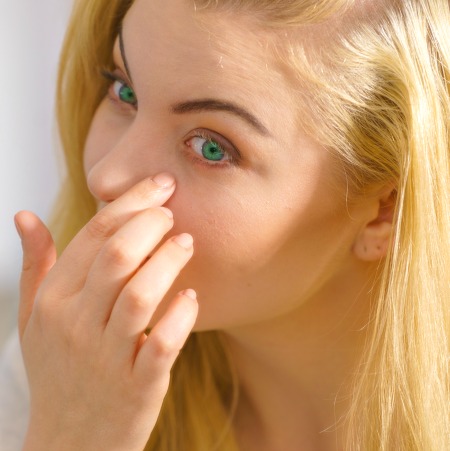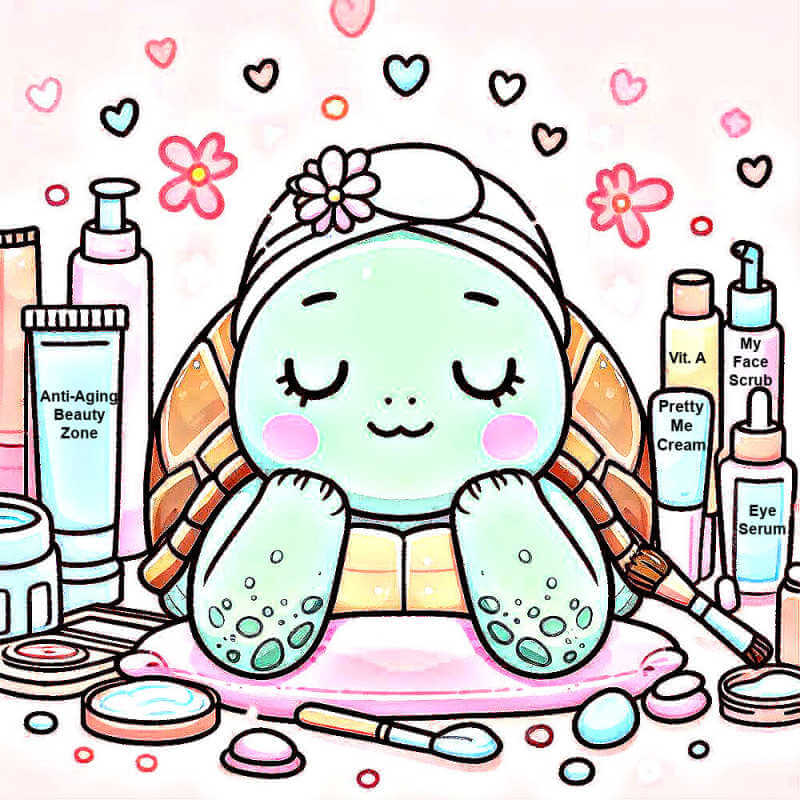As an Amazon Associate, I earn from qualifying purchases and other affiliate links. I only recommend products I’ve tried or researched.
- Home
- Puffy Eyes
How to Reduce Puffy Eyes: Causes, Remedies & Treatments
by: Linda Robison / Facial Fitness Specialist
Want to know how to reduce puffy eyes fast—and for good? I’ve tested everything from cold spoons and tea bags to tightening serums, Botox, and fillers.
Here’s a clear guide to causes and solutions: natural remedies, lifestyle tweaks, skincare, and in-office treatments.
 How to Reduce Puffy Eyes
How to Reduce Puffy EyesWhat causes puffy eyes?
Puffy eyes usually happen when fluid collects in the delicate skin under your eyes. Aging, weaker muscles, and shifting fat pads make it more common over time—but lifestyle and health habits matter too.
The most common causes include:
- Aging & thinning skin (less elasticity + collagen)
- Muscle atrophy (fat pads push forward and look swollen — gentle under-eye exercises may help)
- Sleep deprivation (fluid retention builds overnight)
- Allergies (triggers inflammation + swelling)
- High-salt diet (sodium makes your body hold onto water)
- Genetics (hereditary puffiness or fat pad placement)
- Hormonal shifts (PMS, pregnancy, menopause)
- Dehydration (body holds onto water if you’re not drinking enough)
- Lifestyle habits (smoking, alcohol, too much screen time)
Other common triggers: crying, sleeping face-down, poor circulation, or even eye strain.
Note: If your swelling looks like a firm ridge on the upper cheek and doesn’t change much during the day, it may be: Malar Bags or Festoons.
1. Quick fixes (overview)
Need results in minutes? Try these tips:
- Cool compress: 2–3 minutes.
- Thin caffeine/peptide serum: One tiny drop per eye; let set 5–10 minutes. Which ones work best? See which serums for under-eye puffiness work the best.
- Compare instant-tightening serums: Not sure which “bag-eraser” to try? Check out this Plexaderm vs Competitors review.
- Light lymph sweep or mini cupping: 60–90 seconds to move fluid.
- Concealer in the hollow (not on bulge): Keep layers thin.
Want the full step-by-step playbook? See Quick Fixes for Puffy Eyes
2. Natural remedies for swollen eyes
Looking for natural remedies for swollen eyes? Here are a few remedies that can help:
- Cool tea bags (green/black): Takes about 5–10 minutes.
- Cold compress or chilled spoons: Leave on for 2–3 minutes.
- Light massage tools: Kansa, gua sha) can help nudge fluid.
- Mini cupping: If you like massage tools.
See steps: Quick Fixes for Puffy Eyes and Facial & Eye Cupping (video).
3. Quick makeup tricks
A few smart makeup moves can shift attention upward and give your eyes a fresher look—even on mornings when puffiness is front and center. Try these quick fixes:
- Brighten inner corners.
- Put concealer in the hollow, not on the bulge.
- Upper-lash liner only; keep the lower lash line soft/clean.
- Focus mascara at outer lashes for lift.
How-to details here: Eye Makeup Tips
Bonus tip: Try this next trick to lift your look even more.
Use blush to visually lift your face:
If your eyes look puffy, place blush up and out—just above the cheekbones—and blend toward the temples (skip the apples; they can emphasize puffiness).
This pulls focus upward. Choose peach or rose in a satin finish for glow without emphasizing texture.
4. Medical options
If puffiness doesn’t respond well to lifestyle changes or serums, some people explore medical options.
- Fillers to soften hollows.
- Botox for under-eye creasing (often called a ‘jelly roll’ treatment)
- Blepharoplasty for true fat-pad bags or festoons.
If swelling looks like malar bags/festoons, topicals won’t help much. Talk to a qualified provider.
5. Prevention and lifestyle tips
Try these 7 simple lifestyle tips to reduce eye swelling and prevent puffiness:
- Sleep slightly elevated; consistent schedule.
- Hydrate; ease up on salt/alcohol at night.
- Reduce bad carbs and eat a nutrient-rich diet.
- Allergy control (doctor-approved).
- SPF + sunglasses; gentle eye moisturizer.
- Light a.m. lymph sweep on puffy days.
Daily tips: Look Less Tired
Questions?
Question: What causes puffy eyes?
Question: What causes puffy eyes?
Answer: Puffy eyes often come from fluid buildup, lack of sleep, allergies, or natural aging changes like weaker tissues and shifting fat pads. Lifestyle habits—such as eating salty foods, drinking alcohol, or sleeping face-down—can also make swelling worse.
Question: Why are my eyes puffy in the morning?
Question: Why are my eyes puffy in the morning?
Answer: Overnight fluid pooling + salt/alcohol/allergies. Sleep slightly elevated and do a short lymph sweep. See Quick Fixes and gentle under-eye massage.
Question: Can medical treatments fix under-eye puffiness?
Question: Can medical treatments fix under-eye puffiness?
Answer: Yes. Fillers can smooth hollows so bags appear less noticeable, while eyelid surgery (blepharoplasty) can remove or reposition fat pads for longer-lasting results. Botox may also help with certain muscle-related puffiness. These options go beyond at-home remedies but aren’t right for everyone.
Question: Does Preparation-H work for puffy eyes?
Question: Does Preparation-H work for puffy eyes?
Answer: Not recommended (greasy, irritating). Safer picks: Best Serums for Under-Eye Puffiness. Also see comparison: Plexaderm vs Preparation-H.
Question: What’s the fastest way to reduce puffy eyes?
Question: What’s the fastest way to reduce puffy eyes?
Answer: Cool compress, thin caffeine/peptide serum, concealer in the hollow. Steps: Quick Fixes for Puffy Eyes and my tested reviews of under-eye serums.
Question: How do I make eyelids less puffy fast?
Question: How do I make eyelids less puffy fast?
Answer: Cool compress + gentle drainage (massage/cupping). See Eye Cupping (video).
Question: When should I see a pro?
Question: When should I see a pro?
Answer: Constant, one-sided, painful swelling or festoons should get evaluated; may need in-office options. Learn more: Malar Bags vs. Festoons.
How to reduce puffy eyes: Final Takeaway
Find the Right Solution for You
Wondering how to reduce swelling around your eyes? From under-eye serums and chilled tea bags to professional treatments like dermal fillers and Botox, there’s an option for everyone.
Each method works differently, so it’s about finding what fits your needs.
Explore my detailed reviews and pages to find the best solution for your under-eye concerns. Stay updated and dive deeper into the treatments that work for you!
About the Author:
Linda Robison is a Facial Fitness Specialist and the founder of Anti-Aging Beauty Zone. She shares expert insights on skincare, facial rejuvenation, and beauty treatments—blending traditional wisdom, personal experience, and science-backed research for both at-home and in-office solutions.
Before you go ....
Please tap on the💙in the bottom right corner if you found this page helpful.
FOLLOW ME FOR MORE TIPS:
SHARE OR SAVE FOR LATER:




